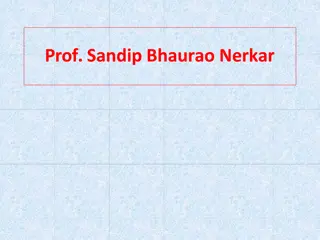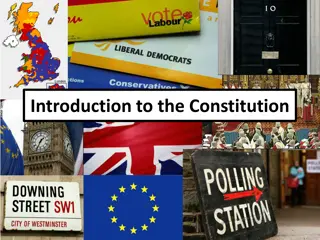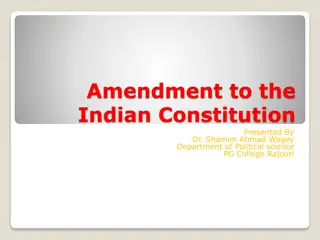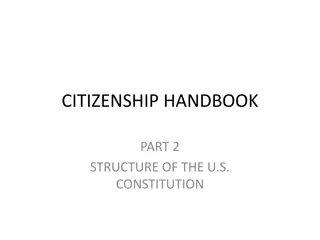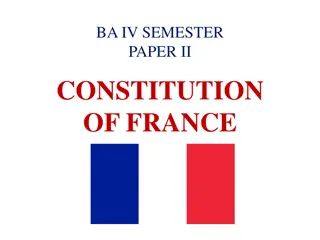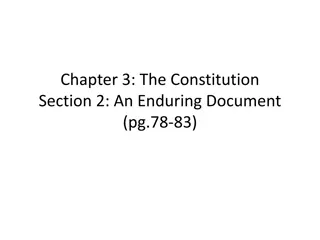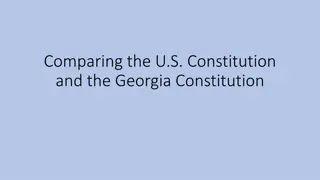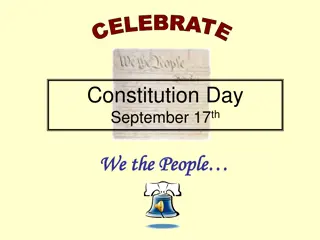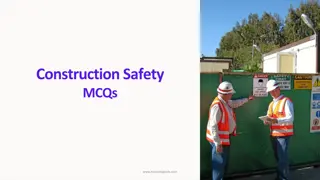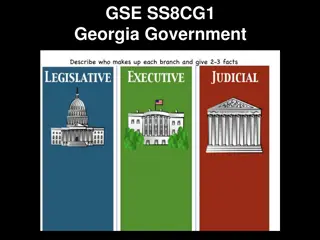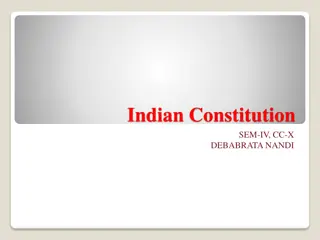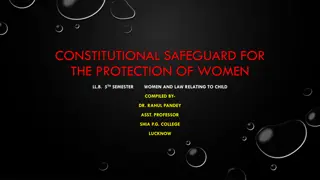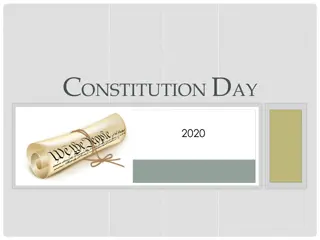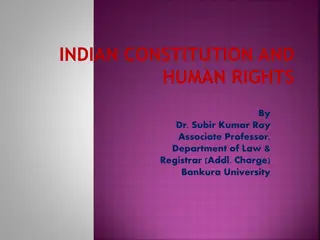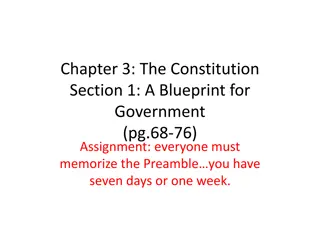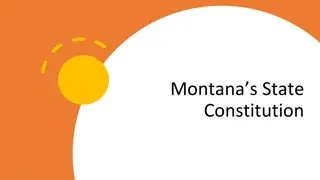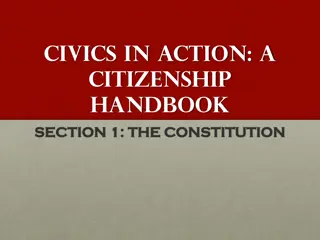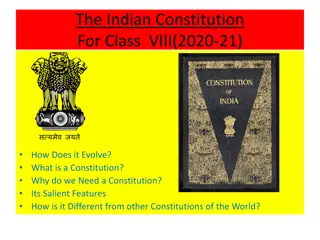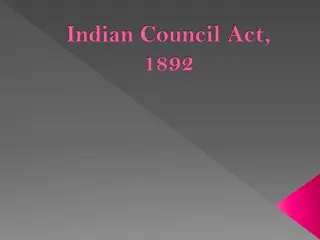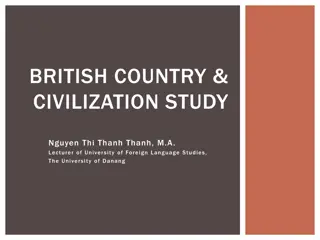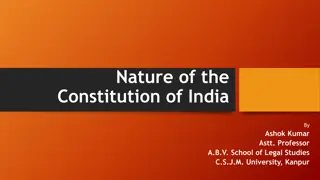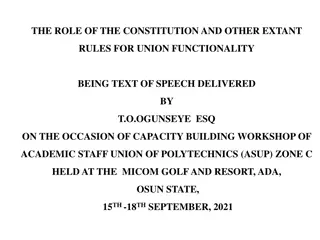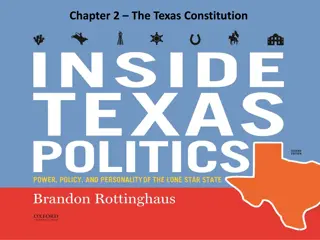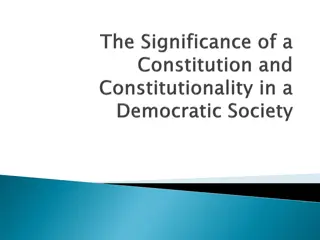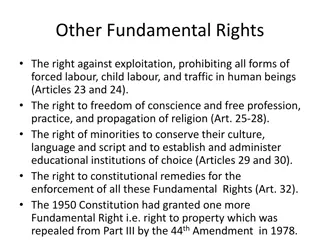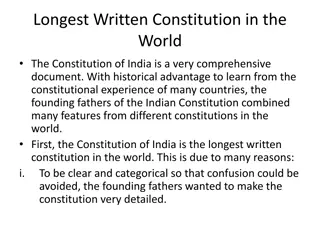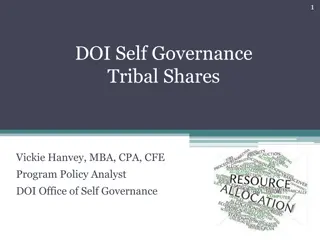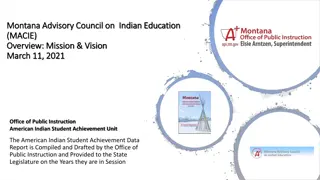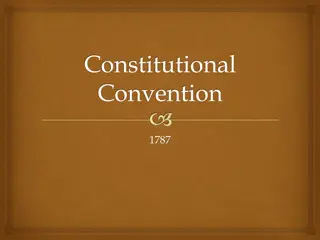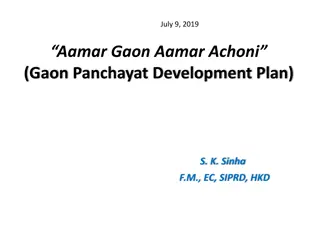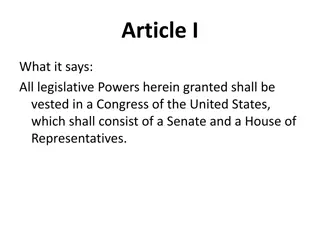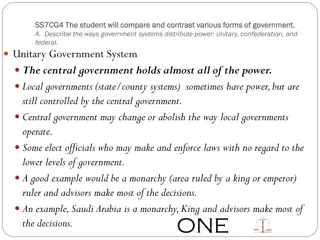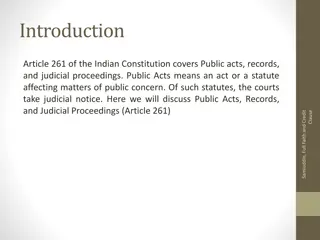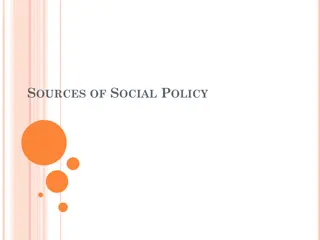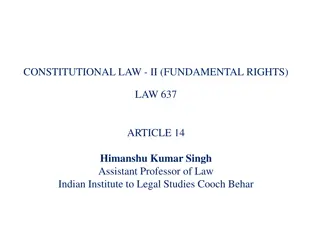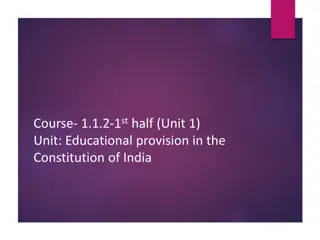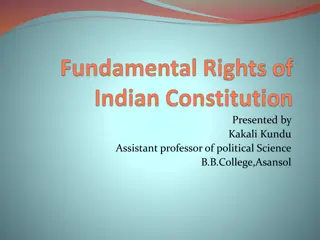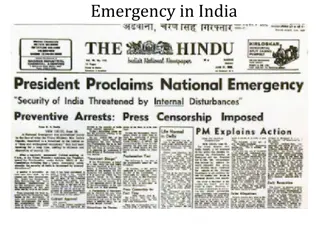Indian Constitution and Local Self-Government: MCQs from Various Years
This content provides multiple-choice questions (MCQs) related to local self-government and the Indian Constitution from various years. Questions cover topics such as Panchayati Raj systems, constitutional provisions, jurisdiction of courts, and impeachment procedures for Judges of the Supreme Court of India.
Download Presentation

Please find below an Image/Link to download the presentation.
The content on the website is provided AS IS for your information and personal use only. It may not be sold, licensed, or shared on other websites without obtaining consent from the author. Download presentation by click this link. If you encounter any issues during the download, it is possible that the publisher has removed the file from their server.
E N D
Presentation Transcript
Prelims Prelims MCQs
2017. 2017. Q. Local self-government can be best explained as an exercise in (a) Federalism (b) Democratic decentralization (c) Administrative delegation (d) Direct democracy
2016. 2016. Q. Consider the following statements: 1.The minimum age prescribed for any person to be a member of Panchayat is 25 years. 2.A Panchayat reconstituted after premature dissolution continues only for the remainder period. Which of the statements given above is/are correct? (a) 1 only (b) 2 only (c) Both 1 and 2 (d) Neither 1 nor 2
2015. 2015. Q. The fundamental object of Panchayati Raj system is to ensure which among the following? 1.People s participation in development 2.Political accountability 3.Democratic decentralisation 4.Financial mobilisation Select the correct answer using the code given below: (a) 1, 2 and 3 only (b) 2 and 4 only (c) 1 and 3 only (d) 1, 2, 3 and 4
2019. 2019. Q. With reference to the Constitution of India, consider the following statements: 1.No High Court shall have the jurisdiction to declare any central law to be constitutionally invalid. 2.An amendment to the Constitution of India cannot be called into question by the Supreme Court of India. Which of the statements given above is/are correct? a) 1 only b) 2 only c) Both 1 and 2 d) Neither 1 nor 2
2019. 2019. Q. With reference to the Constitution of India, prohibition or limitations or provisions contained in ordinary laws cannot act as prohibitions or limitations on the constitutional powers under Article 142. It could mean which one of the following? a) The decisions taken by the Election Commission of India while discharging its duties cannot be challenged in any court of law. b) The Supreme Court of India is not constrained in the exercise of its powers by laws made by the Parliament. c) In the event of a grave financial crisis in the country, the President of India can declare a Financial Emergency without the counsel from the Cabinet. d) State Legislatures cannot make laws on certain matters without the concurrence of Union Legislature.
2019. 2019. Q. Consider the following statements: 1.The motion to impeach a Judge of the Supreme Court of Indian cannot be rejected by the Speaker of the Lok Sabha as per the Judges (Inquiry) Act, 1968. 2.The Constitution of India defines and gives details of what constitutes incapacity and proved misbehaviour of the Judges of the Supreme Court of India. 3.The details of the process of impeachment of the Judges of the Supreme Court of India are given in the Judges (Inquiry) Act, 1968. 4.If the motion for the impeachment of a Judge is taken up for voting, the law requires the motion to be backed by each House of the Parliament and supported by a majority of total membership of that House and by not less than two thirds of total members of that House present and voting Which of the statements given above is/are correct? a) 1 and 2 b) 3 only c) 3 and 4 only d) 1, 3 and 4
2017. 2017. Q. In India, Judicial Review implies- a) The power of the Judiciary to pronounce upon the constitutionality of laws and executive orders. b) The power of the Judiciary to question the wisdom of the laws enacted by the Legislatures. c) The power of the Judiciary to review all the legislative enactments before they are assented to by the President. d) The power of the Judiciary to review its own judgements given earlier in similar or different cases.
2014. 2014. Q. The power to increase the number of judges in the Supreme Court of India is vested in (a) the President of India (b) the Parliament (c) the Chief Justice of India (d) the Law Commission
2014. 2014. Q. The power of the Supreme Court of India to decide disputes between the Centre and the States falls under its (a) advisory jurisdiction (b) appellate jurisdiction (c) original jurisdiction (d) writ jurisdiction
2017. 2017. Q. Right to vote and to be elected in India is a (a) Fundamental Right (b) Natural Right (c) Constitutional Right (d) Legal Right
2017. 2017. Q. Consider the following statements: 1.In the election for Lok Sabha or State Assembly, the winning candidate must get at least 50 percent of the votes polled, to be declared elected. 2.According to the provisions laid down in the Constitution of India, in Lok Sabha, the Speaker s post goes to the majority party and the Deputy Speaker s to the Opposition. Which of the statements given above is/are correct? (a) 1 only (b) 2 only (c) Both 1 and 2 (d) Neither 1 nor 2
2016. 2016. Q. The Parliament of India acquires the power to legislate on any item in the State List in the national interest if a resolution to that effect is passed by the (a) Lok Sabha by a simple majority of its total membership (b) Lok Sabha by a majority of not less than two-thirds of its total membership (c) Rajya Sabha by a simple majority of its total membership (d) Rajya Sabha by a majority of not less than two-thirds of its members present and voting
2019. 2019. Q. Which one of the following suggested that the Governor should be an imminent person from outside the State and should be a detached figure without intense political links or should not have taken part in politics in the recent past? a) First Administrative Reforms Commission (1966) b) Rajamannar Committee (1969) c) Sarkaria Commission (1983) d)National Commission to Review the Working of the Constitution (2000)
Mains Mains Descriptive
Elections. Elections. 1.On what grounds a people s representative can be disqualified under the Representation of People Act, 1951? Also mention the remedies available to such a person against his disqualification. (2019) 2.In the light of recent controversy regarding the use of Electronic Voting Machines (EVM), what are the challenges before the Election Commission of India to ensure the trustworthiness of elections in India? (2018) 3. Simultaneous elections to the Lok Sabha and the State Assemblies will limit the amount of time and money spent in electioneering but it will reduce the government s accountability to the people Discuss. (2017) 4.To enhance the quality of democracy in India the Election Commission of India has proposed electoral reforms in 2016. What are the suggested reforms and how far are they significant to make democracy successful? (2017)
Judiciary. Judiciary. 1. How far do you agree with the view that tribunals curtail the jurisdiction of ordinary courts? In view of the above, discuss the constitutional validity and competency of the tribunals in India. (2018) 2.Critically examine the Supreme Court s judgement on National Judicial Appointments Commission Act, 2014 with reference to appointment of judges of higher judiciary in India. (2017) 3.What was held in the Coelho case? In this context, can you say that judicial review is of key importance amongst the basic features of the Constitution? (2016) 4.Starting from inventing the basic structure doctrine, the judiciary has played a highly proactive role in ensuring that India develops into a thriving democracy. In light of the statement, evaluate the role played by judicial activism in achieving the ideals of democracy. (2014)
Local Govt. Local Govt. 1. The reservation of seats for women in the institutions of local self- government has had a limited impact on the patriarchal character of the Indian Political Process. (2019) 2.Assess the importance of the Panchayat system in India as a part of local government. Apart from government grants, what sources the Panchayats can look out for financing developmental projects. (2018) 3. The local self-government system in India has not proved to be an effective instrument of governance . Critically examine the statement and give your views to improve the situation. (2017) 4.In absence of a well-educated and organized local level government system, `Panchayats and Samitis have remained mainly political institutions and not effective instruments of governance. Critically discuss. (2015)


